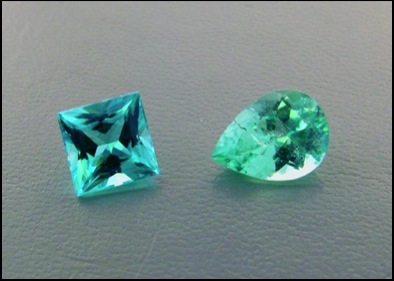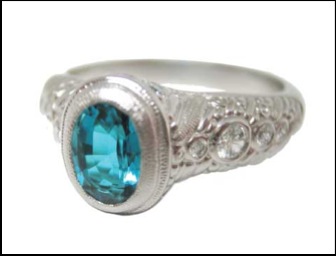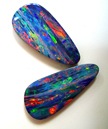
Cuprian tourmalines
The Paraíba tourmaline controversy
It’s been more than a decade since the transcendent neon blues of Brazil’s Paraíba tourmaline first came to market. Like Tanzanite, Paraíba was named for the area in which it was mined, a location that has proved to be unique in all the world. Both of these rare gems have become collectable, and fine gems of size command princely sums. Traces of copper and manganese in the molecular structure are responsible for Paraíba’s stunning color.
Now the term “Paraíba” is being used to describe other copper-containing tourmalines from Nigeria and Mozambique, and many in the gem world aren’t happy about it. These new gems range in color from shades of robin’s-egg blue to blue-green to green and even violet. They contain the same ingredients as Paraíba tourmaline, but in different concentrations. They’re simply not “Paraíba” in either look or origin, but the sellers of these stones hope the name’s caché will make their stones more saleable.

Paraíba tourmaline in Platinum by Alex Sepkus
Recently the president of the American Gem Trade Association (a gem dealer who just happens to have a large inventory of Mozambique and Nigerian tourmaline), announced that henceforth the AGTA gem lab would certify all copper-bearing tourmalines as “Paraíba”, regardless of origin. He claimed that the AGTA Board had made the decision, but this proved not to be true. In the face of outraged opposition, he took a sudden leave of absence and the AGTA board rescinded the previously announced policy.
The jury is still out on this issue, but the most recent issue of Gems and Gemology, the quarterly journal of the Gemological Institute of America, reported that probable origin of Paraíba-like tourmaline could now be determined through sophisticated gemological testing (LA-ICP-MS, see article at right). The international Laboratory Manual Harmonization Committee, which includes seven major gemological laboratories, has for now agreed to apply the term “Paraíba” to all blue, bluish-green to greenish blue, green and violet elbaite tourmaline that contains copper and manganese, regardless of its origin. But in this country, the FTC forbids using place names to describe gems unless the seller can provide documents to support the claim. Stay tuned–and as always, CAVEAT EMPTOR.
This month’s sources include the article “Paraíba-type Copper-bearing Tourmaline from Brazil, Nigeria and Mozambique"; and AGTA member bulletins.

